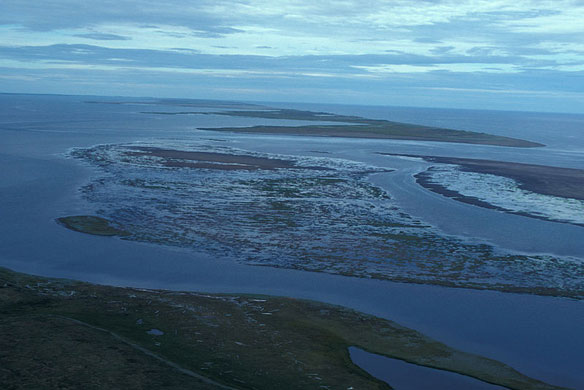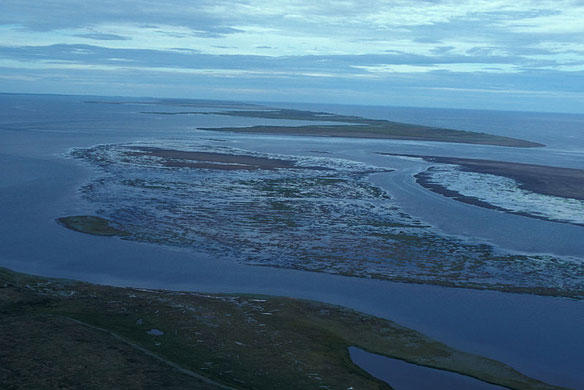
Cape Espenberg, located on the Seward Peninsula in Alaska, on the Chukchi Sea coast. The Seward Peninsula is a large peninsula on the western coast of the U.S. state of Alaska. It projects about 320 kilometers (200 mi) into the Bering Sea between Norton Sound, the Bering Strait, the Chukchi Sea, and Kotzebue Sound, just below the Arctic Circle. Caption: Wikipedia. Photo source: U.S. Fish and Wildlife Service
Excerpts;
A team of researchers led by the University of Colorado Boulder has discovered the first prehistoric bronze artifact made from a cast ever found in Alaska, a small, buckle-like object found in an ancient Eskimo dwelling, on Alaska’s Seward Peninsula.
The object found has a rectangular bar connected to a broken circular ring. It’s about 2 inches long and 1 inch wide and resembles a small buckle. The object was found in August by a team excavating a roughly 1,000-year-old house that had been dug into the side of a beach ridge by early Inupiat Eskimos at Cape Espenberg on the Seward Peninsula, which lies within the Bering Land Bridge National Preserve.
The excavations are part of a project paid for by the National Science Foundation to study human response to climate change at Cape Espenberg from A.D. 800 to A.D. 1400. Archaeologist Owen Mason, a research affiliate with the university based in Anchorage, says six or seven home sites were excavated.
…
Of particular interest are temperature and environmental changes that may be related to Earth’s Medieval Warm Period that lasted from about A.D. 950 to 1250.
“That particular time period is thought by some to be an analog of what is happening to our environment now as Earth’s temperatures are rising,” said Mason. “One of our goals is to find out how these people adapted to a changing climate through their subsistence activities.”
The Cape Espenberg beach ridges, wave-swept deposits made of sand and sediment running parallel to the shoreline that were deposited over centuries, often are capped by blowing sand to form high dunes. The Cape Espenberg dwellings were dug into the dunes and shored up with driftwood and occasional whale bones.
The team is examining the timing and formation of the beach ridges as well as the contents of peat and pond sediment cores to help them reconstruct the sea-level history and the changing environment faced by Cape Espenberg’s settlers…









